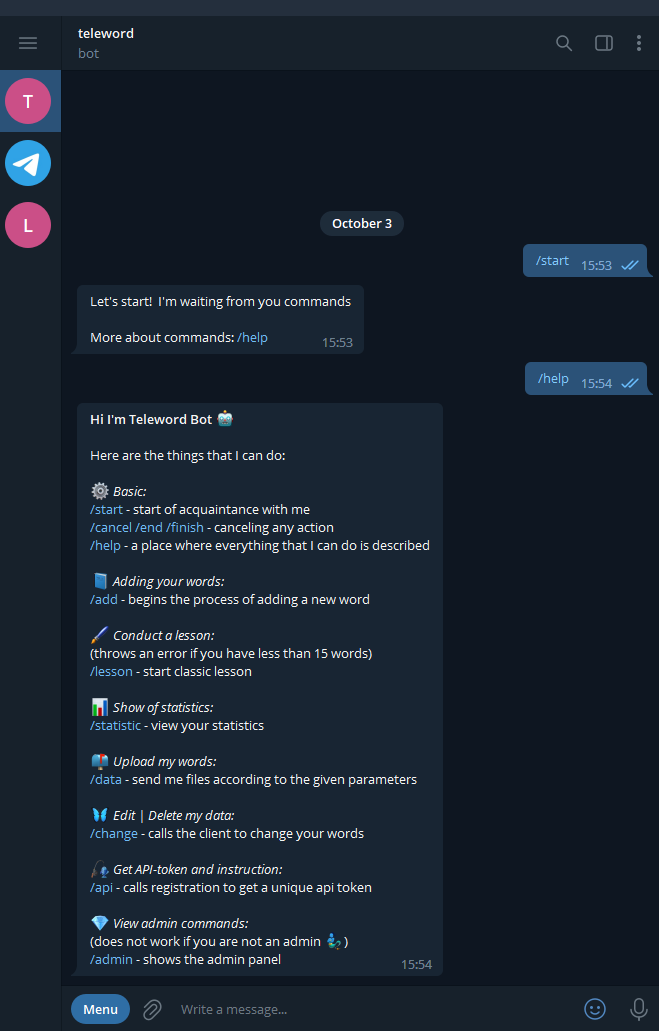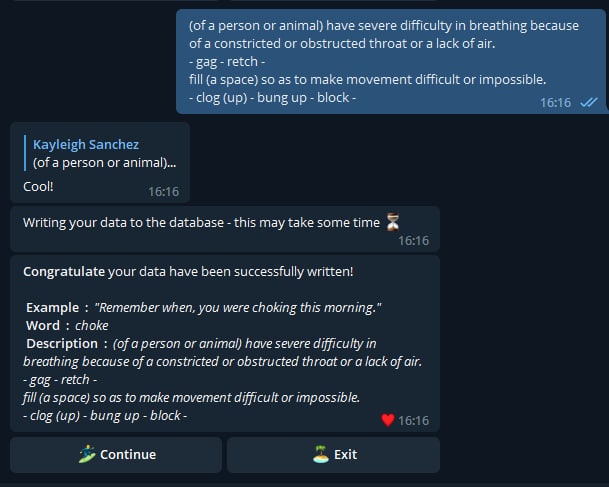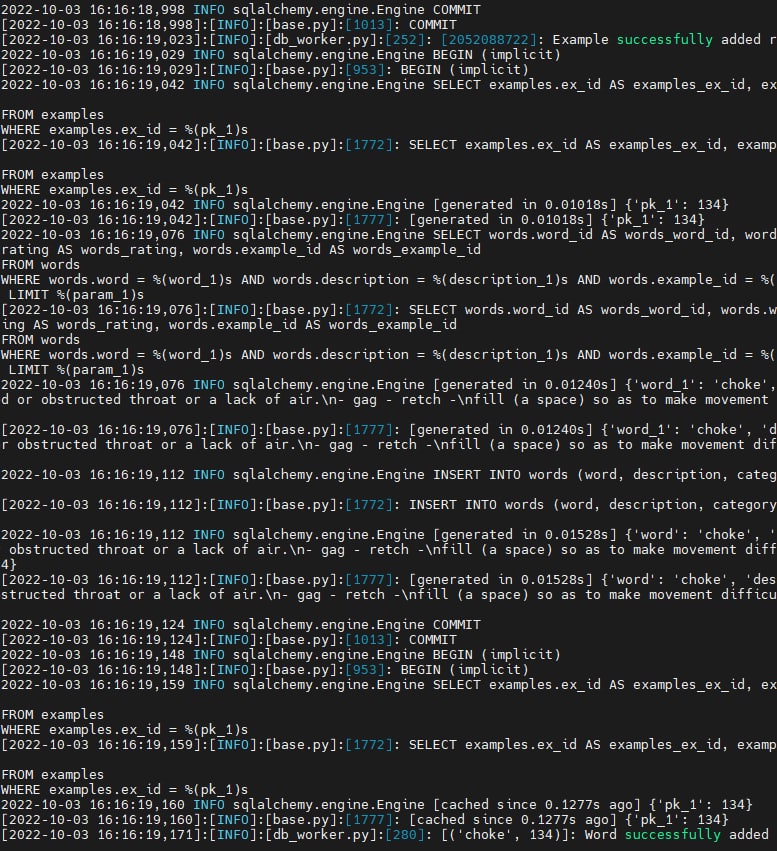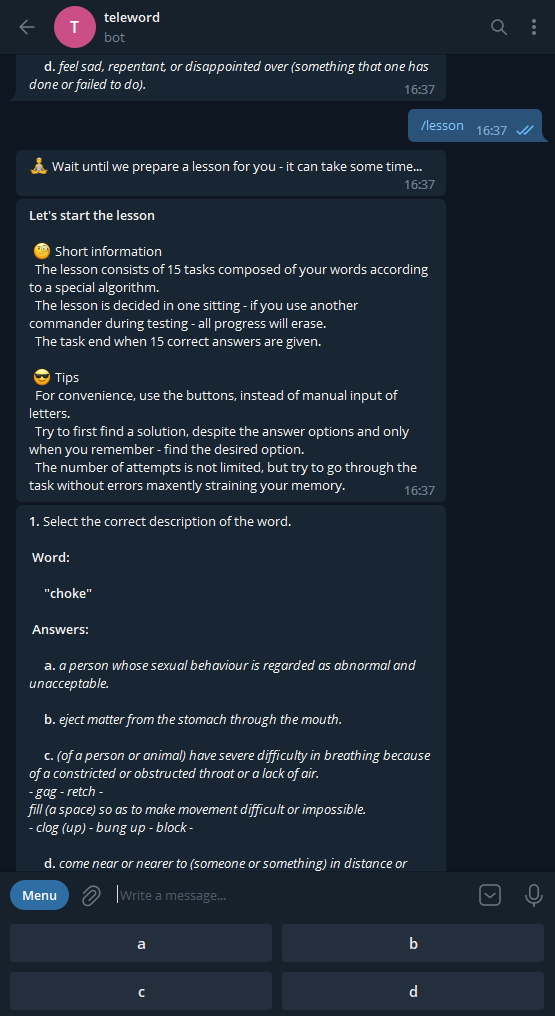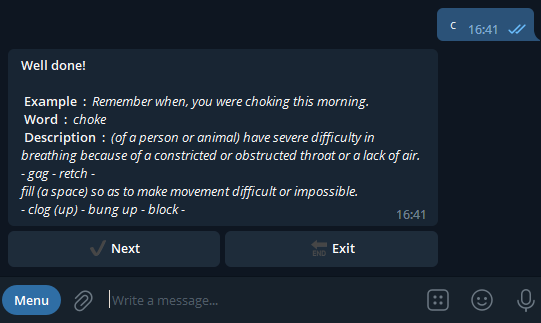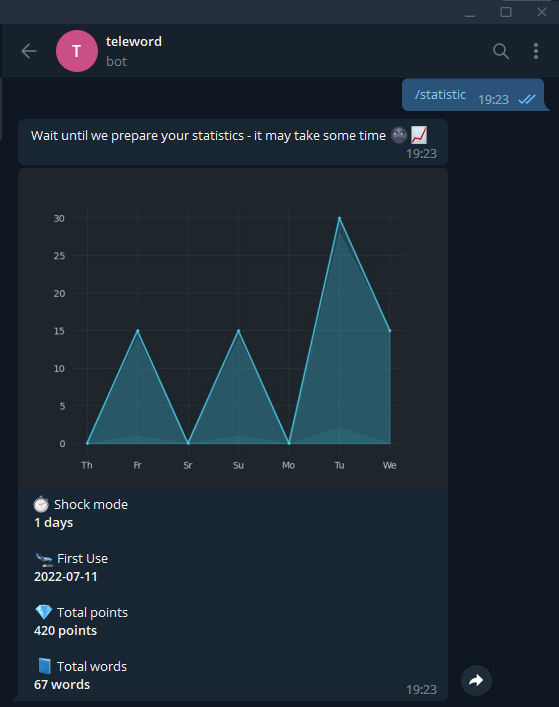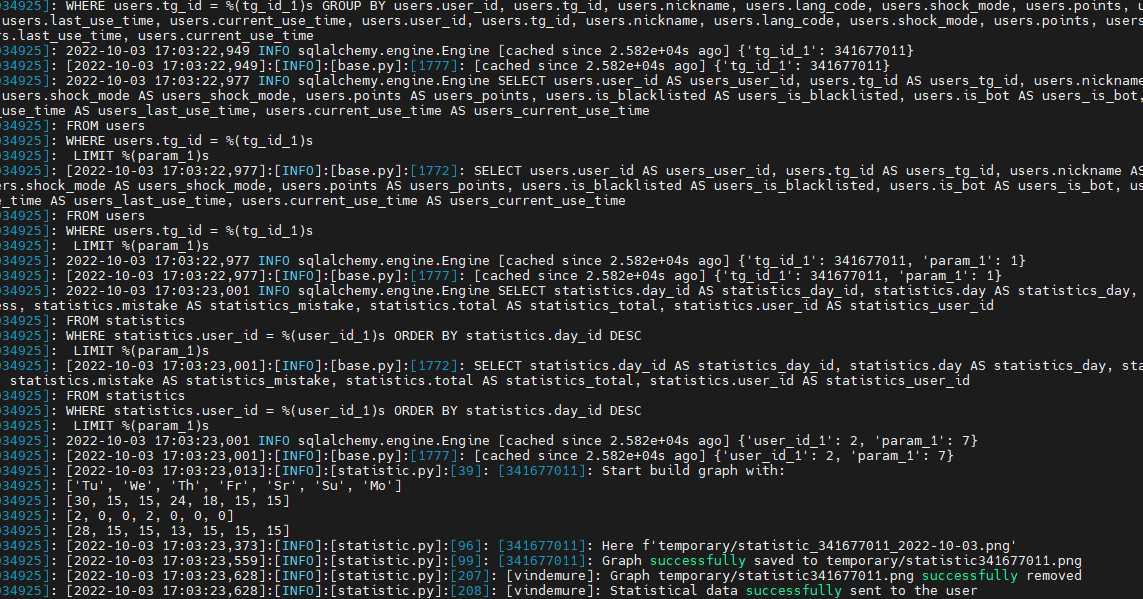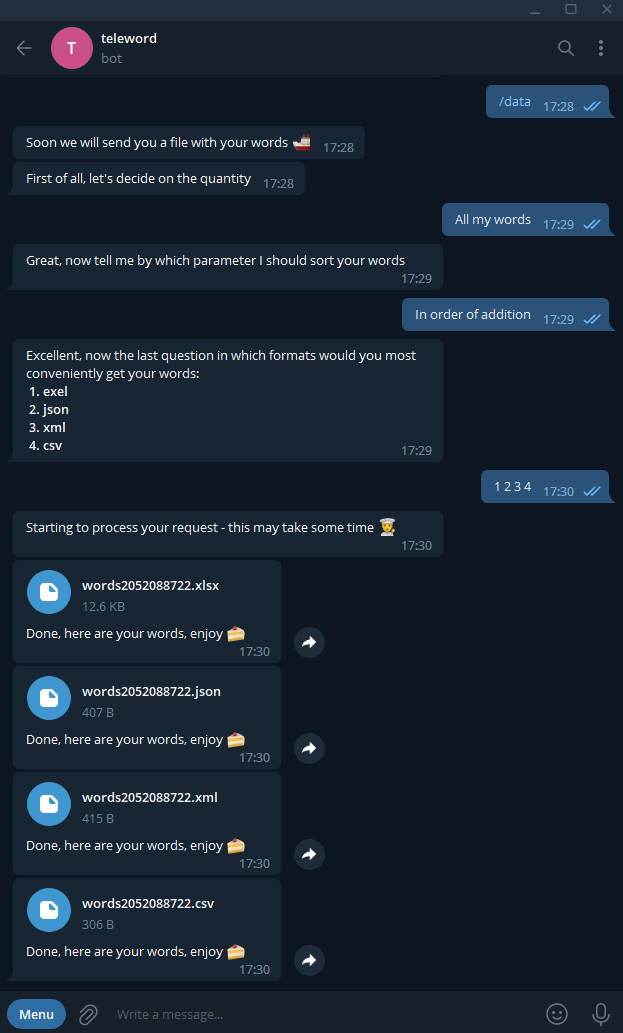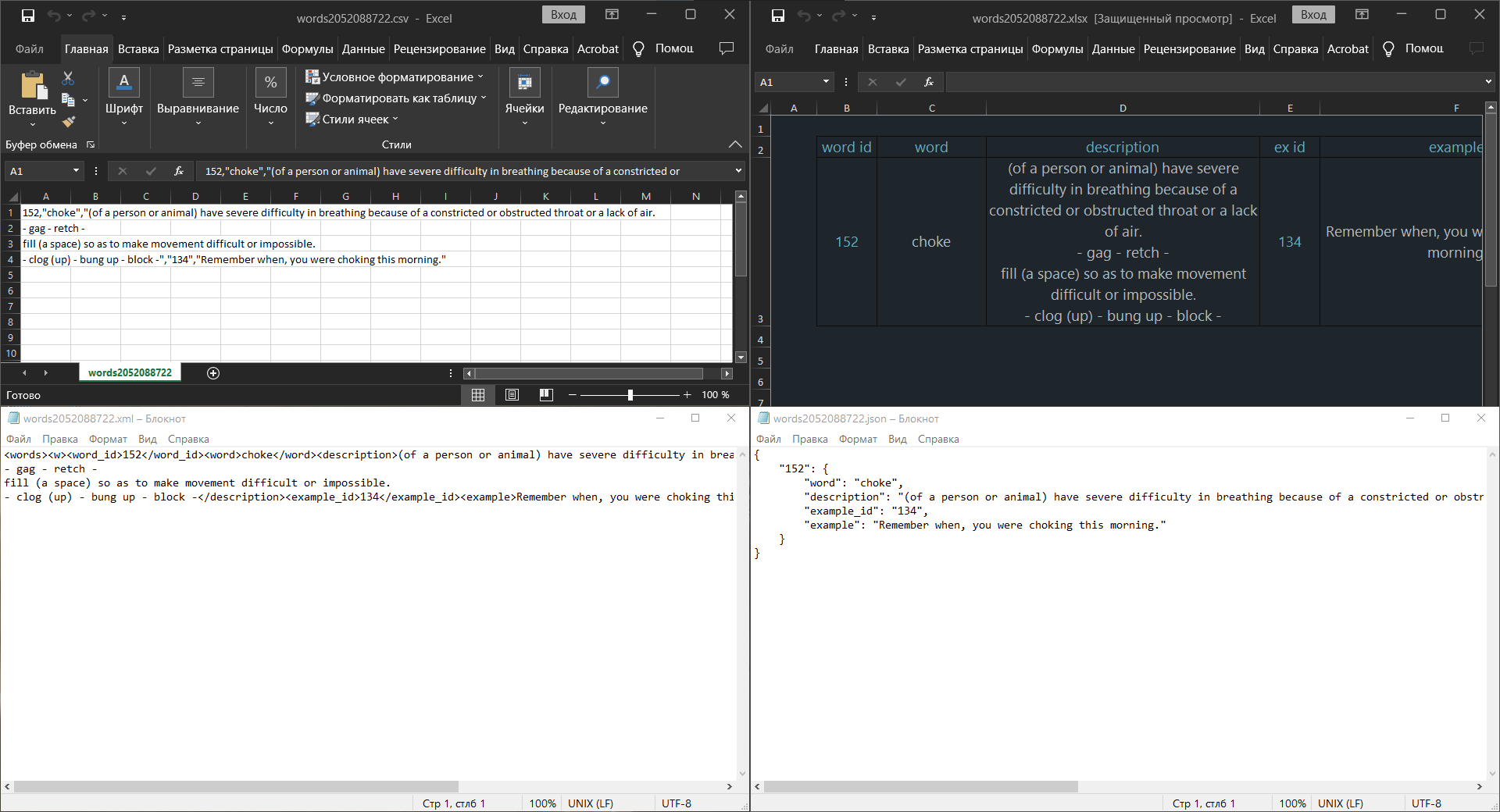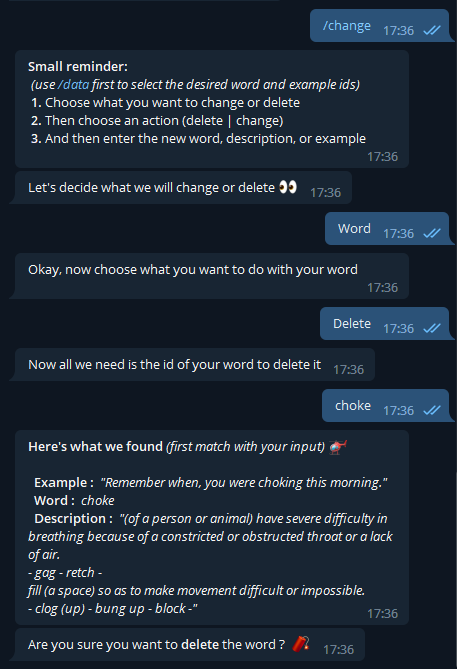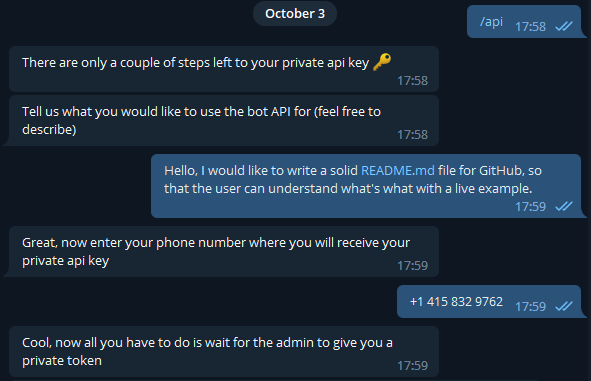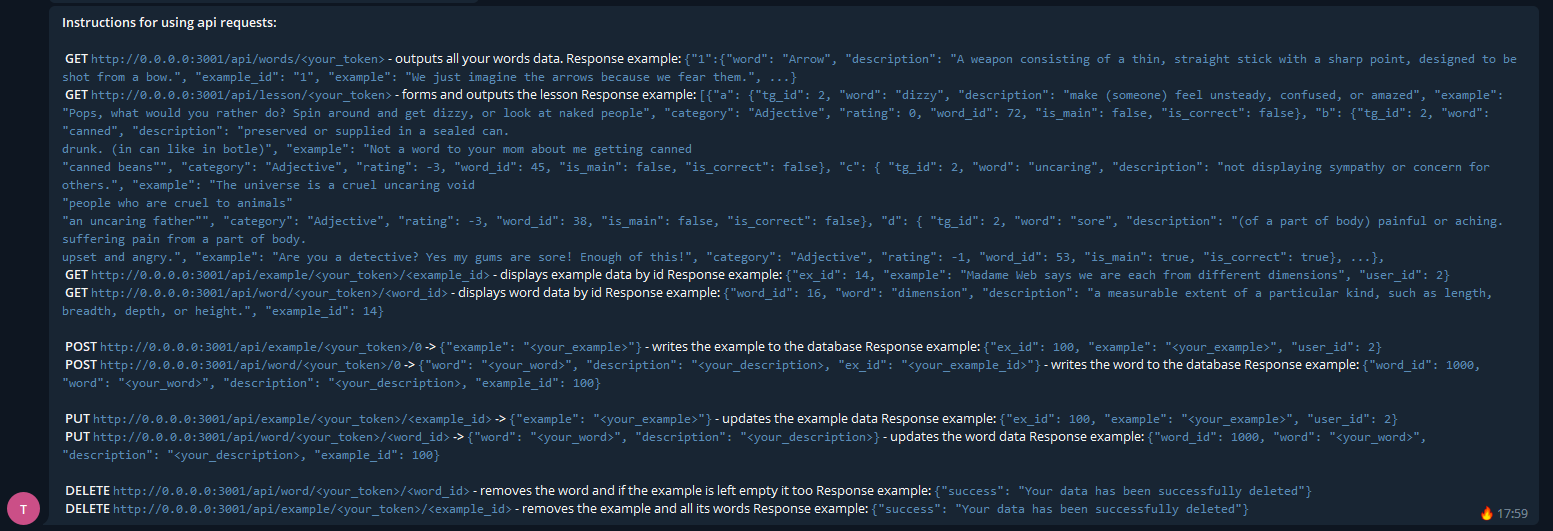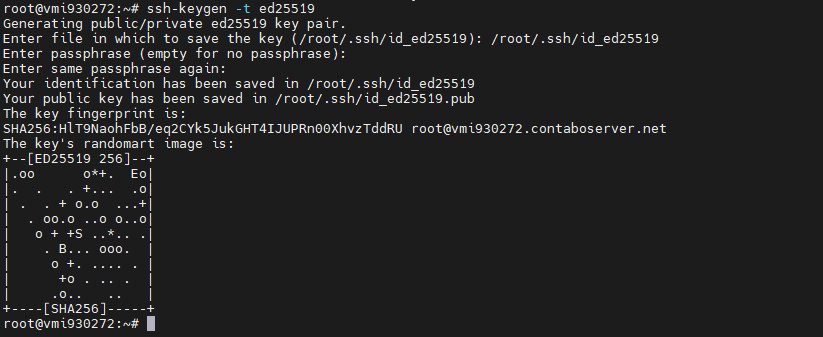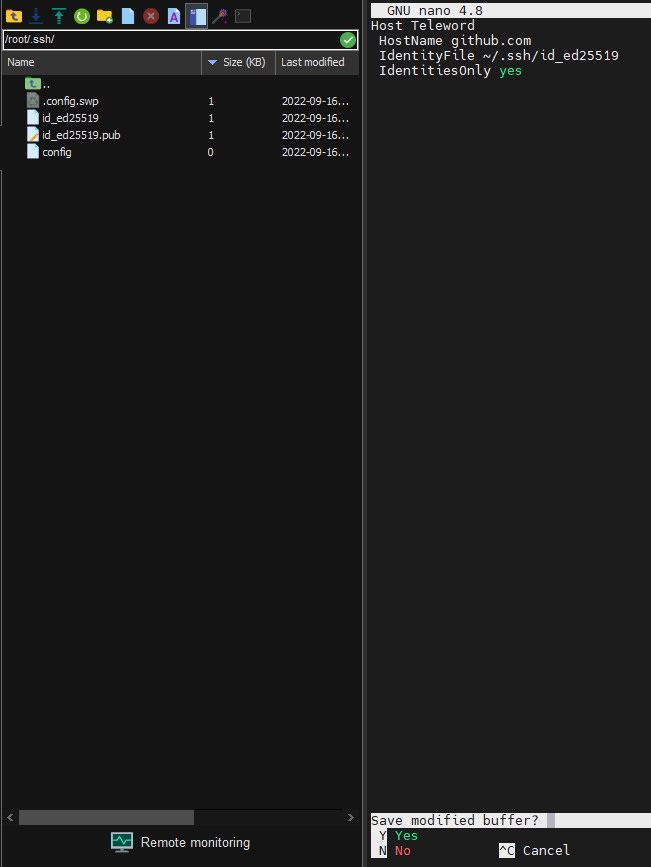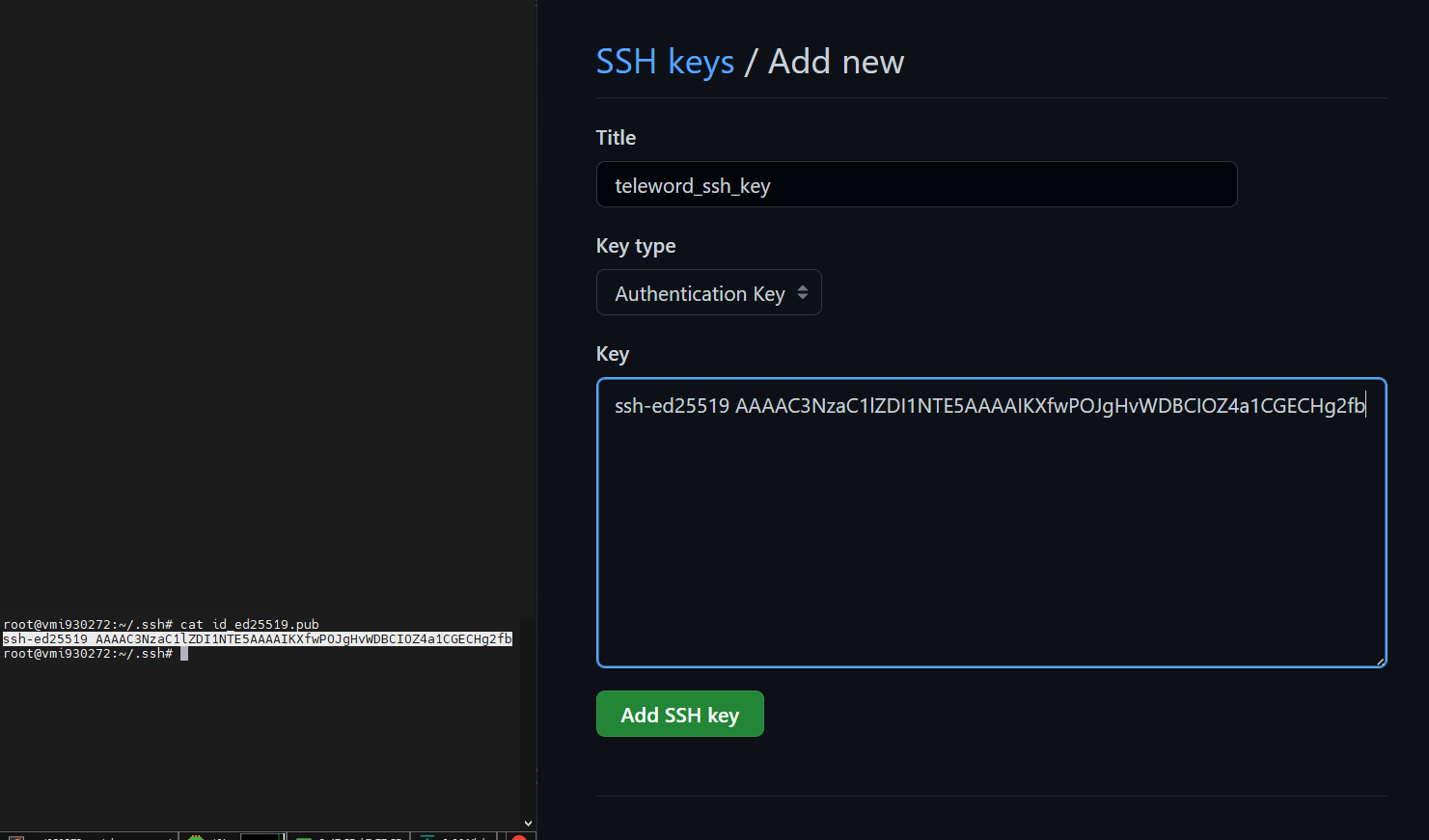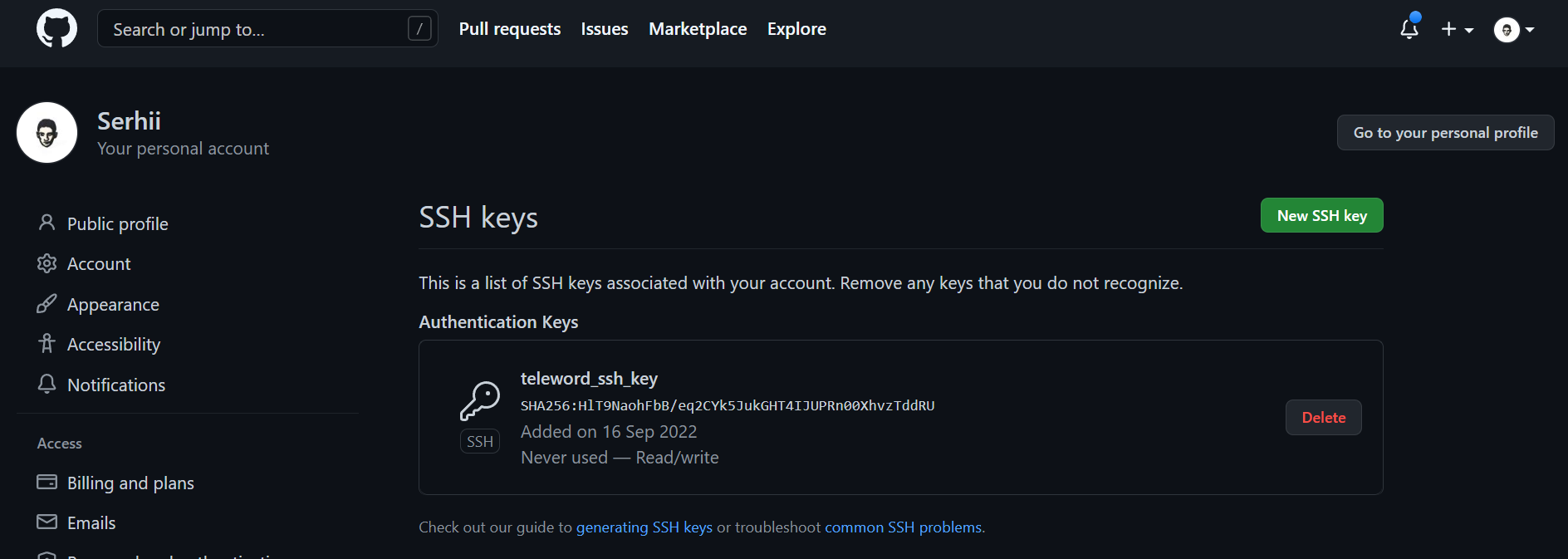- 🧳 Launched May 2022
- 🚪 Release v2.2.1
- 📦Code size 300 КB
Add your own learned words to the app to reinforce your knowledge with a daily quiz.
Lessons are formed by priority words. The more often the user uses the bot, the more productive it works.
Checks such as card-word, word-card - with a regular approach, they allow you to very effectively consolidate the learned words, especially when the user chooses his own examples with words.
Track your progress. Train every day. Edit words. Build your code on top of the API.
You can check how the user part of the telegram bot works.
A quick overview of the main functionality
First of all, you enter the bot using the /start command
And /help command to get to the main menu
The user is verified; the data is entered into the table
Now it's time to add new data, this is how it usually looks for me
I open the series with subtitles, a dictionary (for me, it's just a browser) and a Teleword
I watch a series until I stumble upon an unfamiliar word
I write down a remark with this word and look it up in the dictionary
I copy the description and wait for a successful addition
Great, I click continue and continue to enjoy the series only a level smarter than I was 30 seconds ago
Under the hood:
- the data is checked for correctness
- the part of speech of the word is pulled up for more effective testing
- rating is being prepared
You have added more than 15 initial words (I recommend at least 30-40) - now you can start(/lesson) filling words
with tests
This is what we remember! Let's read the example again to strengthen our knowledge.
One of the hardest parts of the backend is hidden behind the lesson formations.
It is after the lesson that all user statistics are collected - his mistakes, successes, attendance, the rating of words changes.
The occupation itself is formed by repeated enumeration with a bit of randomness.
You can see Python code in functions
db_worker.get_lesson_data()The logic for checking the correctness of the answer is enclosed in two coroutines:
- one of them checks if the lesson is finished, generates a task from the radis and displays it to the user
handlers.lessons.cb_get_task_number_issues_task- the other one catches the user's response and, depending on the correctness, launches the coroutine, passing it the current data about the lesson
handlers.lessons.ms_get_answer_set_task
Who doesn't like to look at statistics? Make a smart face and click /statistiс
We climb into the database with difficult queries, count the number of words
db_worker.word_count(), and the user tables pull out data on the total number of points and the number of shock days of the userdb_worker.get_user().We transfer data by day from the statistics table to plotting through matpotlib
db_worker.get_user_stat()->db_worker.build_total_mistakes_firsttry_data_for_graph()->handlers.statistic.build_graph()
We do not hide anything from users, if they need words with the right data type - hold on command /data
If you are a regular user - my advice to you - enjoy a beautiful 1. excel file 😎
The logic is simple, choose what and with what you want to do and do it
The logic is simple - give the user the opportunity to edit their data on the sql data ids.
By revalidating the input, checking permissions, and running a cascading deletion of words when trying to delete an example.
Or maybe we want to develop something of our own on the Teleword api? Then let's kindly distract our good old friend admin from swimming in the Mediterranean Sea and drinking cocktails
While we wait, we can study detailed instructions for use
All methods of the restful interface are implemented via flask-api in a separate synchronous
api.pymodule.To use the request key - the administrator must personally process the request and issue the key to the user.
Let's make sure the linux machine is up-to-date.
sudo apt update && sudo apt upgrade -y
Installing useful packages
sudo apt install git openssh
Let's generate ssh keys using the s4lv ed25519 method
ssh-keygen -t ed25519
Setting up access to ssh keys
cd /root/.ssh/
touch config
nano config
Host <SSH NAME>
HostName github.com
IdentityFile ~/.ssh/<KEY>
IdentitiesOnly yes
Copy the public key and transfer it to GitHub
cat <KEY>.pub
cd #
git clone git@<SSH NAME>:vinter-man/teleword.git
yes
nano teleword/config/config.py
Do not forget to change the config file for yourself.
Let's move on to setting up a virtual environment
sudo apt install -y make build-essential libssl-dev zlib1g-dev \
> libbz2-dev libreadline-dev libsqlite3-dev wget curl llvm libncurses5-dev\
> libncursesw5-dev xz-utils tk-dev libffi-dev liblzma-dev python-openssl
git clone https://github.com/pyenv/pyenv.git ~/.pyenv
echo 'export PYENV_ROOT="$HOME/.pyenv"' >> ~/.bashrc
echo 'export PATH="$PYENV_ROOT/bin:$PATH"' >> ~/.bashrc
echo -e 'if command -v pyenv 1>/dev/null 2>&1; then\n eval "$(pyenv init -)"\nfi' >> ~/.bashrc
pyenv in tall 3.10.2
pyenv rehash
eval "$(pyenv init -)"
sudo apt install python3-venv
cd teleword
pyenv local 3.10.2
python -m venv <VENV NAME>
source <VENV NAME>/bin/activate
pip install -r requirements.txt
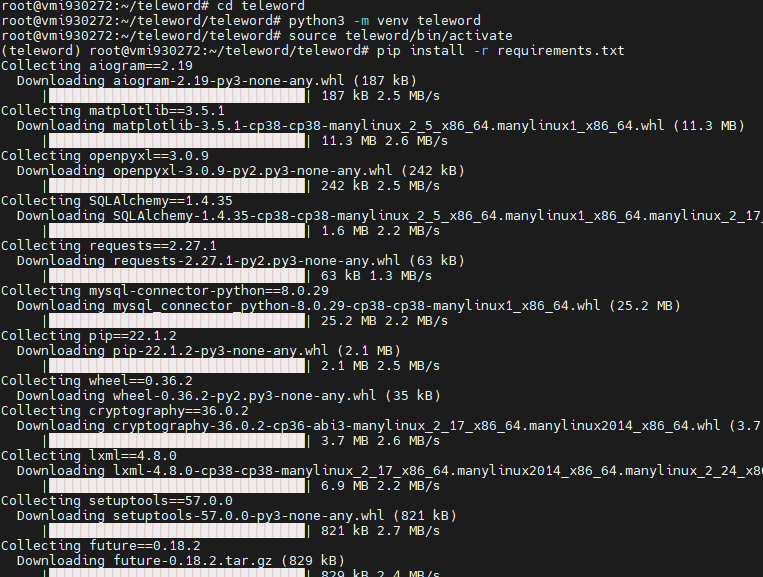 After a successful launch, you can exit
After a successful launch, you can exit
Now you have to decide how it will be most convenient for you to launch your bot for continuous operation.
sudo apt install screen
screen -S teleword
python teleword.py
View logs in real time
screen -r teleword
Let's create and run the service
sudo nano /etc/systemd/system/teleword.service
[Unit]
Description=Teleword
After=network.target
[Service]
Type=simple
User=root
ProtectHome=false
WorkingDirectory=/root/teleword/
ExecStart=/root/teleword/<VENV NAME>/bin/python teleword.py
Restart=on-failure
RestartSec=10
LimitNOFILE=4096
[Install]
WantedBy=multi-user.target
After saving the service file, let's start Teleword
sudo systemctl daemon-reload
sudo systemctl enable teleword
sudo systemctl restart teleword
sudo systemctl status teleword
View logs in real time
journalctl -u teleword -f
Necessary Dependencies:
sudo apt install apt-transport-https
curl -fsSL https://download.docker.com/linux/ubuntu/gpg | sudo apt-key add -
sudo apt install docker
cd teleword
docker build -t teleword .
docker run \
-d \
-p 26256:80 \
--name teleword \
teleword
View logs in real time
docker logs teleword -f --tail 100
Install docker-compose
cd teleword
docker compose up -d --build
View logs in real time
cd teleword
docker compose logs -f --tail 10
- Telegram - https://t.me/vindemure
- Mail - serhiivinterman@gmail.com

